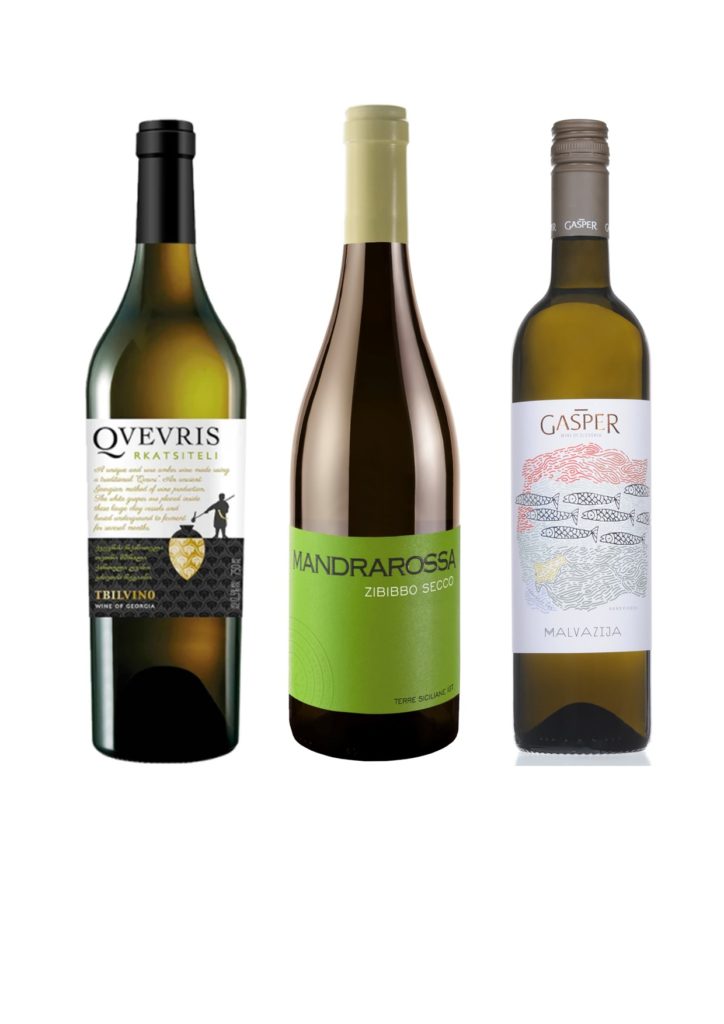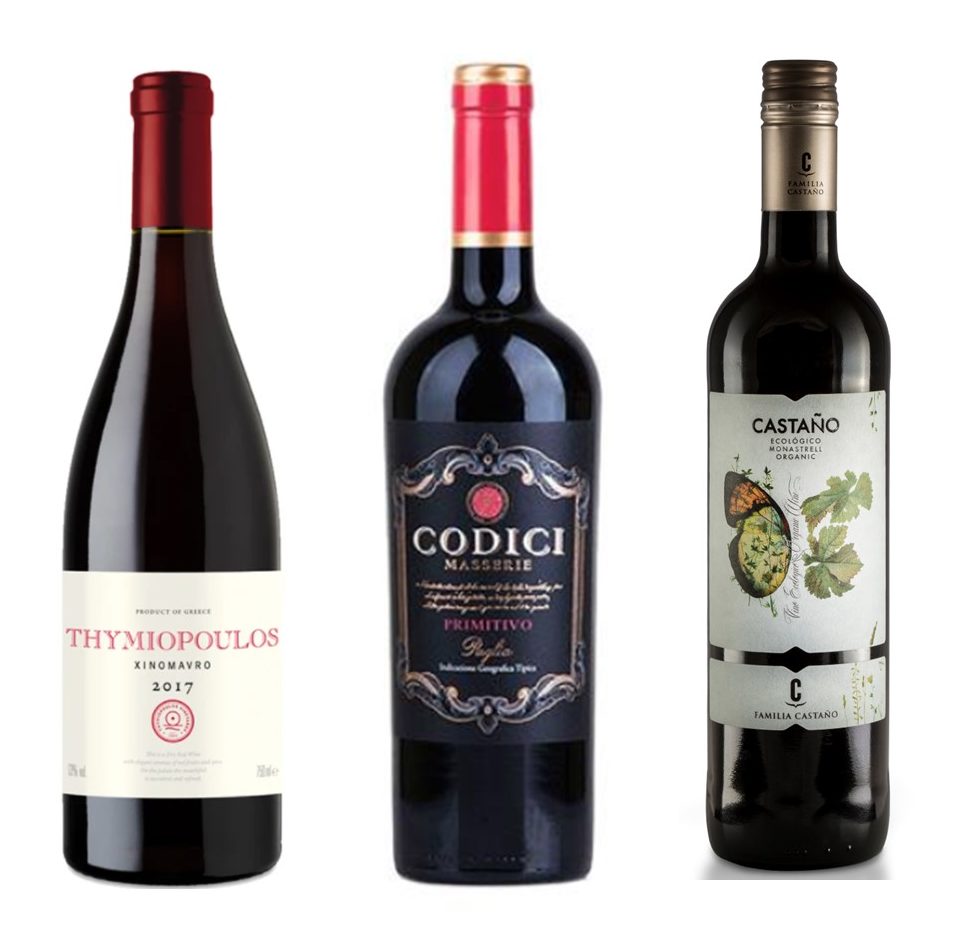It struck me that I have talked quite a lot through any number of blog posts about ‘indigenous’ varieties, so I thought now would be a good time to do a bit of a deep dive into the subject – especially as my next wine club case will have as its theme…yes you’ve guessed it…. ‘indigenous’ grapes.
Why? Because there are so many fabulous wines being made from grapes most of us are unfamiliar with or perhaps have never even heard of, by showcasing a few of them hopefully it will open up some new wines for people to try. So out goes Chardonnay, Sauvignon Blanc and Cabernet Sauvignon and in comes Rkatsiteli, Zibibbo, Zweigelt and Xinomavro – worth a lot of points in scrabble but well worth trying honest!
‘Indigenous’ basically means originating or occurring naturally in a particular place; native to a particular place or country. There are around 1400 known vine varieties but the reality is there are likely to be many more with discoveries all the time. Italy, Spain and Portugal boast some of the largest numbers of indigenous varieties – often with the strangest of names – for example Portugal’s Esgana Cao (rather delightfully translated as ‘Dog strangler’!)
A factor that can add to the confusion around grape varieties is the fact many grapes have different names depending on where they are grown. For example: Monastrell (from Spain) is known as Mataro (in Australia) and Mourvedre in France. Then there is Tempranillo (best known for its use in Rioja and Ribera del Duero), which has so many names (even in its native Spain) that it gets very confusing: Ull de Llebre, Cencibel, Tinto Fino and Tinta del Pais. In Portugal it goes by Arragonez and Tinta Roriz.
Anyway I digress, below are a handful of grapes I have picked out which I think are well worth exploring some of which will be in my next case.
First up a few white grapes worth looking out for:
Rkatsiteli
This ancient grape originated in Georgia (considered by many to be one of the world’s earliest wine producing regions). Today while some plantings can be found as far afield as America, it remains firmly a grape of the Caucasus region. Pale skinned, high in acidity and able to accumulate sugar well, it is a versatile grape capable of making dry, sparkling, sweet and even fortified wines.
Where the grape comes into its own however is when it is traditionally made in Qvevri – where the extended skin-contact produces highly original, complex ‘orange’ wines. For those that haven’t read my blog on Qvevris or orange wines to give a little recap – the grapes are lightly crushed before being placed (skins, pips and all) inside an egg-shaped clay amphorae which is buried underground. No yeast is added, the fermentation occurs naturally and then the wine is left on lees for several months before the Qvevri is dug up, unsealed, and the wine racked off.
The presence of the skins gives these wines an orange colour and changes the aromatic profile completely – less fresh fruit, instead you get more dried fruit and honeyed notes alongside more savoury flavours (yeast, nuts). Phenolic, quite full bodied and sometimes slightly oxidative (a tad reminiscent of sherry) – these are definitely wines that you want with food.
The wine I have found is a terrific example and great value for money too – orange wines can be expensive, but this one comes in a shade over £12.

Zibibbo
This member of the Muscat family is considered an ‘ancient vine’ – the grape is thought to have originated in Egypt (where allegedly Cleopatra enjoyed a glass or two!) where it was primarily used as a table grape or for drying – the name comes from the Arabic word Zabīb meaning ‘dried grape’. Today it is more commonly known as Muscat of Alexandria and has spread around the Mediterranean and even further afield to Australia and South Africa where it is often used to produced sweet dessert wines.
Best known for Passito style wines in the Italian islands (where it goes by the name Zibibbo) the drying process adds apricot, dried fruit, honeyed notes to the naturally aromatic profile of the grape: citrus fruit, orange blossom, peach. It is also very adept as a dry white wine too.
While I admit, technically the grape didn’t originate in the Italian islands (most likely brought there by the Arabs) as it one of the most important white varieties grown on Sicily I wanted to include it, because I have found a really characterful dry version from Mandrarossa that I think will be a real winner.
Malvasia Istriana
Malvasia comes in all shapes, sizes and indeed colours and is actually a group of ancient vine varieties (thought to have originated in Greece). Perhaps unsurprisingly there are lots of different iterations globally: from Italy, the Canary Islands and Madeira to Australia and beyond.
The unique Malvasia Istriana variety can be found in Italy’s Friuli-Venezia Giulia and throughout the Istrian peninsula (coastal Croatia and Slovenia which formed part of the old Italian empire) from which it takes its name. The grape is likely to have been introduced by Venetian merchants from cuttings from Greece – and produces wines which are fresh, quite full bodied, and highly aromatic: ranging from zesty citrus to stone fruits with lifted floral aromas often with a trademark honeyed note. The wine I have found for the case is lovely – a DWWA Silver medal winner from the Goriška Brda region of Slovenia (where it is known as Malvazija) that is well worth trying.
Grüner Veltliner
Austria’s signature white grape variety. Although grown successfully further afield (there are good examples to be found in Oregon, Washington and in New Zealand), the only country where it is extensively grown is Austria: particularly the Kamptal, Kremstal and Wachau regions.
‘Grüner’ means ‘green’ – probably a reference to the colour of the grape berry but also likely to be a nod to the flavour characteristics which do tend towards the herbaceous – think green pepper, celery and dill alongside grapefruit, lime, green apple and trademark white pepper spice. There are two distinct wine styles: Unoaked fresh and tangy, or weighty and textural – which may or may not have seen a smidgeon of oak.
For some reason (perhaps the difficulty in pronouncing it?) or because you rarely find one under a tenner, or maybe because of its more savoury profile, GV or Grüner as I like to call it, remains a relatively unfashionable grape with the everyday wine drinker which is a real shame as it produces some truly lovely wines which are great with food.
Moving onto some of the red varieties worth trying – some more familiar than others….
Monastrell
As I mentioned at the top of this piece, Monastrell goes by a number of names depending on where it’s grown around the world and historically tended to be used more as a blending grape: for example as a component in France’s Châteauneuf du Pape, Bandol and the Rhone GSM blends. It is thought to have originated in Spain where the warmth of south-eastern Spain suits this heat loving grape which needs a hot Mediterranean climate to fully ripen and careful management is also needed to avoid excessive alcohol and tannins. Spain remains the largest grower of the grape and although some wine aficionado’s might be a bit sniffy, I personally think they offer some of the best value Spanish reds around (look for the DOPs of Jumilla and Yecla in particular). Flavour wise – generally speaking expect full bodied wines with ripe tannins, and lots of character – big bold black fruits (plum, cherry, blackcurrant, blackberry), herbal notes and savoury, slightly gamey characteristics too with sweet spices and cocoa notes if aged in oak.
I’ve found a lovely organic Monastrell from one of Yecla’s top producers Castaño that is superb value under £8.

Primitivo
Primitivo is believed to have originated in Dalmatia and is likely to have arrived in Puglia in Italy several thousand years ago where it is now widely established. The name means “early one’ probably as a result of its tendency to ripen early and it goes by a number of different names globally – you may be more familiar with its American moniker: Zinfandel.
As the grape both ripens and accumulates sugar easily, Primitivo can often weight in at over 15% ABV so these aren’t shy wines! Historically the grape tended to be used as a blending variety which has damaged its reputation a tad (as has the sweet white Zinfandel of America, which is about as far removed from good Primitivo as it’s possible to be!) Today the grape is undergoing something of a renaissance when made as a varietal wine (in both dry and sweet styles). As a dry wine it is capable of producing full bodied, deeply coloured, intensely aromatic wines with a rich blend of plum, red berries, dried fruits, sweet vanilla spice, and hints of liquorice.
When looking for wines to include in this case I came across a IGT wine from Codici which I thought was just fabulous for the money, hence its inclusion.
Pinotage
Arguably the most divisive grape in existence! Pinotage was the brainchild of a South African professor (Perold) who created the grape in 1925 by crossing Pinot Noir with Cinsault – Cinsault at the time was known as Hermitage, hence the name Pinotage! Although other countries have had a go with it, (including New Zealand and the US) it remains quintessentially South African.
What does it taste like? Lots of ripe dark fruit ranging from mulberry to damson and blackberry. Spicy, smoky and earthy, sometimes even with a hint of banana! It can also be prone to create volatile esters (which can be reminiscent of nail varnish) when over-cropped and made badly – so don’t buy a cheap bottle is my best advice!
I think Pinotage gets a bit of a bad rap, yes wine snobs may turn their noses up – for reasons noted above – but when Pinotage is produced from old bush vines (so yields are low) and sensitively handled in the winery it produces some genuinely lovely wines. I’ve included one in my upcoming case from one of South Africa’s premier producers that is well worth a try and will change opinions I’m sure.
Xinomavro
Hailing from Central and Northern Greece (The PDO Naoussa is a mono-varietal appellation, dedicated entirely to Xinomavro) this is arguably Greece’s greatest red grape with the ability to age for many years in bottle. A hugely versatile grape, Xinomavro is used to make sparkling, sweet and rosé wines, but is arguably at its best as a dry red.
Meaning ‘sour black’, the wines produced are actually relatively pale in colour but don’t let that deceive you, Xinomavro is a unique, beguiling grape that produces medium to full bodied wines with high acidity and chewy pronounced tannins alongside bright berry fruit, lifted florals, and smoky tobacco and savoury tapenade notes that are reminiscent of the great Northern Italian grape Nebbiolo. So ‘baby barolo’ could be an apt moniker! Definitely one to try.
Zweigelt
Apart from being the last grape in the alphabet (a good question for the next time any of you are doing a zoom quiz!), very few people are likely to know too much about this grape, probably because it hasn’t ventured too far from its roots. Zweigelt didn’t exist before the 1920’s – it is actually a crossing of two other Austrian/eastern European varieties: Blaufränkisch and St. Laurent and takes its name from the Professor who created it.
As a late budder and early ripener the grape is ideally suited to Austria’s cool climate and today is the country’s most widely planted red grape. What to expect? Deeply coloured wines with lots of juicy fruit notes – mainly along the black fruit spectrum (cherry and plum) with spicy black pepper and even hints of sweet cinnamon. On the palate the wine is often lighter in body than the nose suggests, with surprisingly soft tannins and relatively high acidity ensuring a bright, fresh finish. Zweigelt is well worth trying – it is capable of producing really elegant wines and is very versatile for food matching even working well with fish. Due the acidity and low tannins this is a wine that can be served slightly chilled.
Carménère
This grape originated in the Bordeaux region of France before Europe was hit by a devastating Phylloxera outbreak which decimated the vines there, thankfully a few cuttings had already made their way to Chile. Today Carménère is now almost exclusively grown in Chile where it has become arguably their ‘signature grape’. Ironically, winemakers in Chile didn’t even realise the grapes they were growing were Carménère they thought they was Merlot (it wasn’t until1994 that DNA analysis in Chile proved many of the vines were actually Carménère).
It’s an easy mistake to make, the vines look similar and the wines do have some of Merlots’ characteristics – both in body and aroma/flavour crossed with some of Cabernet Sauvignon’s structure. Think red fruits with raspberry, cherry and plum and a trademark herbal peppery note, and when oaked, the wines are richer with notes of vanilla and cocoa often present. This is another late ripening variety so thrives better in warmer conditions, Colchagua in the Central Valley is a good place to look.
So there you have it, I could have put together a far bigger list but I don’t want to overstay my welcome with this piece. Look out for more information on the The Wine Demystifier wine club ‘Indigenous grapes’ case that will follow shortly – I have worked really hard to ensure all the wines offered are tremendous value for money and well worth a go.
